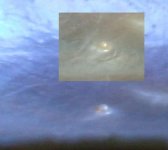Caitlin
Well-known member
- Joined
- Dec 11, 2004
- Messages
- 8,502
Scientists Prove that Pearls Can't Come from a Grain of Sand.
The Most Renowned of all Pearl Myths- that pearls come from grains of sand -has been disproven in a scientific experiment.
Internationally renowned Marine Biologist and Pearl farmer, Douglas McLaurin, M.Sc. Aquaculture, and partners in a scientifically run pearl farm, in Guaymas, Sonora, Mexico, have produced a video of a scientific experiment of inducing a natural pearl to form from grains of sand.
These posts were in another thread, but deserve a thread of their own. I hope people will use this thread to inform well-meaning but incorrect pearl experts and the myth-believing public that pearls are not caused by grains of sand.
The Most Renowned of all Pearl Myths- that pearls come from grains of sand -has been disproven in a scientific experiment.
Internationally renowned Marine Biologist and Pearl farmer, Douglas McLaurin, M.Sc. Aquaculture, and partners in a scientifically run pearl farm, in Guaymas, Sonora, Mexico, have produced a video of a scientific experiment of inducing a natural pearl to form from grains of sand.
These posts were in another thread, but deserve a thread of their own. I hope people will use this thread to inform well-meaning but incorrect pearl experts and the myth-believing public that pearls are not caused by grains of sand.
Last edited:



![Natural Blisters 016 [640x480].jpg Natural Blisters 016 [640x480].jpg](https://www.pearl-guide.com/data/attachments/9/9138-680ebfd6caef4aab25624db745f14841.jpg)
![Natural Blisters 018 [640x480].jpg Natural Blisters 018 [640x480].jpg](https://www.pearl-guide.com/data/attachments/9/9139-6c0f8f8e296eef84cd47e28ac7a1c101.jpg)
![Natural Blisters 017 [640x480].jpg Natural Blisters 017 [640x480].jpg](https://www.pearl-guide.com/data/attachments/9/9140-1547763c7a3166ce2d889427c6e58309.jpg)
![Natural Blisters 019 [640x480].jpg Natural Blisters 019 [640x480].jpg](https://www.pearl-guide.com/data/attachments/9/9141-db1a26002c5262012f4a3cb44a44ffdb.jpg)
